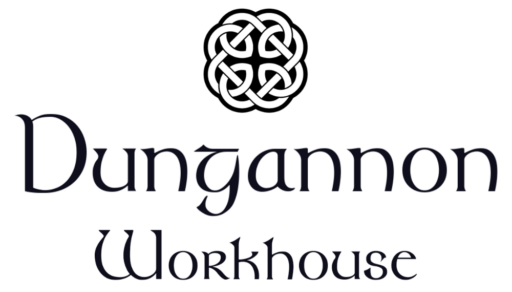From its opening in 1842, the Dungannon workhouse catered for children and at various points in its history, children were the overwhelming number. Indeed, within the first 19 months of the workhouse opening there were 37 orphans and 94 other children residing in the house. That number had risen to 169 children by 1845, of whom 82 were in the building for more than two years.
The onset of Famine resulted in large numbers of children being thrust upon the workhouse as parents died, emigrated and in some cases sadly abandoned their children.
There were 536 under the age of eighteen in the workhouse in 1849 (272 male, 264 female). In the aftermath of the Famine there were 356 people in the workhouse: Under 7 (62); aged 7-16 years (149); aged 15-20 (20); aged 20 to 40 years (44) and aged forty years plus (81). indeed, almost 60 per cent of all workhouse ‘inmates’ were under the age of sixteen. With such high numbers of children there must have been a significant drive to ‘board’ out these young men and women for two years later, in 1861, there were 169 under the age of fifteen.
The high number of children meant that in the 1850s the guardians decided to split the children when it came to schooling a schoolmaster for boys was hired. In 1861, Mr. Robinson, a government inspector reported: the workhouse in good order grounds nice and much improved. Boys school well conducted, girls school very unsatisfactory guardians communicated with on the subject and requested to obtain the schoolmaster’s resignation. All the boys to be employed and workers land as soon as the weather admitted of his seven girls knitting or sewing.
In 1859 the Armagh Guardian, noted how with 102 paupers in Dungannon workhouse:
‘The extraordinary decrease attests in itself a marked improvement in the social condition of the able-bodied poor of the district comprehended in the union. The appearance of the house and grounds is very creditable to the master and matron, and the clerk’s department has long regarded as a model of business like arrangement and clerical accuracy. There are 21 patients in the hospital, and the average weekly expenses of supporting a pauper are 1s 2d.
There was little change within the workhouse and reality for the children who occupied the workhouse was grim. A sample of 400 children who died in the
workhouse from the 1840s to 1900 reveals over eighty different illnesses which resulted in their deaths. These included: Marasmus 45 Bronchitis (32); Marasmus (21); Phthisis (18); Diarrhoea (14); Fever (10); Meningitis (8); Hooping Cough (8); Measles (6); Hydrocephalus (6); Pneumonia (5); Typhoid (5); Diphtheria (5); Phthisis (5); Smallpox (4) and Scrofula (4). These included in 1860 Anne Lappin, aged 1 from Mountjoy who died of Hooping Cough; Mary A Brennan, aged 1 who died of Smallpox; Timothy Hyde, aged 1 who died of Scrofula; Anne McGee, aged 1 who died of Diphtheria and Mary Campbell, aged 1 ½ who also died of Diphtheria.
***
By the end of the nineteenth century the numbers of children in the workhouse had fallen, as had the number of orphans. According to a parliamentary report of 1904, there were 13 orphans (7 male and 6 Female) in the workhouse, one less than in 1902. However, it remained a grim place for children. There were some occasional glimpses of light or normality for children, as seen in the section on ‘Entertainment in the Workhouse’. In 1882 for example the Master of the Workhouse was directed to provide

for the workhouse children ‘a plentiful supply of tea and buns at the expense of the countess of Castlestuart’, while the children were frequently brought out for exercise and excursions towards the end of the nineteenth century.
There were some who worried about the fate of children of in the workhouse. In 1906 William McGuffin, the workhouse clerk, told a Report of the Viceregal Commission on Poor Law Reform in Ireland that:
I consider that the names of the children at nurse should not be published and posted up throughout the union . The children cannot help their position and as they are now supervised this blood might not be put upon them.
The case of Mary Hall
Among the many items concerning people in the workhouse that Thomas Tackaberry noted in his journal was the case of Mary Hall. Tackaberry wrote:
The master begs to report that on Sunday morning last he admitted a female infant believed to be about 3 days old that was left the night before at Mrs Fraser’s hall door in the townland of Killyneil. At Mrs Fraser’s request the child has been entered on the workhouse register as a Methodist and baptised by the Reverend Mr McConnell Methodist minister in the name of Mary Hall.
How many more like Mary Hall were brought to the workhouse in this manner?




